#hindi langblr
Text
Spanish Teacher: ¡Hola! ¿Como estas?
Me, crying: Mera naam...Lucifer...hai...
#my multilinguality is such a mess#multilingual#bilingual#languages#language#multilinguism#bilingualism#spanish#spanish language#spanish langblr#hindi#hindi language#hindi langblr#desi#desiblr#desi problems#chatpost#lucifers inferno
25 notes
·
View notes
Text
I would love to follow more accounts for this blog also! Idk if people still make tumblr posts like this, but feel free to like/rb this post if you're a langblr account especially for Spanish or really any Indian languages, but especially Hindi, Konkani, or any Dravidian ones!
#langblr#spanish langblr#hindi langblr#desiblr#desi langblr#konkani langblr#malayalam langblr#kannada langblr#tamil langblr
14 notes
·
View notes
Text
Which apps do I use to learn languages?

YOUTUBE!
Languages I use it for: Nahuatlahtolli (mainly), Thai, recently subscribed to an Arabic and a Tagalog channel, and just for the cool linguistics / history of the languages.
DUOLINGO!
Languages I use it for: Hindi, Thai, and sometimes I dabble in the Hawaian and Diné Bizaad (Navajo) courses.
I was able to download an older version by going to https://old-duolingo.online/ and it made everything easier.
FUNEASYLEARN!
The bee app that isn’t beelingue. I really like it and has help me a lot with languages in other scripts. They have a series of games per topic so you get all the pacakge.
Languages I use it for: Hindi, Thai, and Arabic.
I was able to get the premium version by downloading the APK Premium Unlocked version.
MONDLY LANGUAGES!
What I love most about this app is the chatbot function. As someone who isn’t ready to dable into the most social of the language learning apss this is very cool.
Languages I use it for: Tagalog, Hindi, Arabic.
I was able to get the premium version by downloading the APK Premium Unlocked version.
DISCORD!
I recently join a server for learners of native languages and is soo cool.
Languages I use it for: Nahuatlahtolli
APRENDE NAHUATL!
A to be honest, interactive dictionary made by the INPI (National Institute of Indigenous Nations), with some grammar explanations.
What I really like is that it has a listening function, images and both classic and modern spelling.
Languages I use it for: Very obviously Nahuatlahtolli.
LANGUAGE TRANSFER!
A to be honest podcast! You get to hear to different lessons of a topic, what is cool is that the teacher knows what he’s talking about.
Languages I use it for: Arabic (egyptian)
MANGO LANGUAGES!
Also more focus on the listening/speaking aspect. It has a very nice breakdown of the languages and repetition.
Languages I use it for: Tagalog, Thai, Arabic, Hindi.
I was able to get the premium version by downloading the APK Premium Unlocked version.
LING!
What I like about the app is the conversation excercises, where you get to hear/read a conversation and then fill in the blanks.
Languages I use it for: Tagalog, Thai, Hindi.
I was able to get the premium version by downloading the APK Premium Unlocked version.
TUMBLR!
I like to see the langblr posts because it gives me motivation to continue my language learning journey + a lot of great resources.
Languages I use it for: Hindi, Arabic, Tagalog, Thai, Nahuatlahtolli, and just in general to learn more about linguistics, and see how other people are learning.
#langblr#hindi langblr#arabic langblr#tagalog langblr#thai langblr#nahuatl langblr#language learning#resources#nitlajtoa
35 notes
·
View notes
Text
28.11.23, 1:26 am // i read लालची बंदर (the greedy monkey) on hyplern. it took me about 10 minutes to read 121 words. very slow, but i haven’t read in hindi for a long while, so i’m actually quite proud of how much i’ve retained.
the most difficult sentence i came across, as well as some vocab:
लेकिन बदकिस्मती से सुराख़ इतना छोटा था की वो अपनी मुट्ठी नहीं निकाल सका।
lekin badakismatee se suraakh itana chhota tha kee vo apanee mutthee nahin nikaal saka.
meaning: but unfortunately (due to bad luck), the opening was so small that [the monkey] could not get his fist back out.
मुट्ठी - fist
चट्टान - rock
गेहूँ - wheat
सुराख़ - hole, opening, eyelet, orifice
बदकिस्मती - bad luck, misfortune
अलबत्ता - however
ढीली - loose
लालची - greedy
4 notes
·
View notes
Text
August goals:
I will be working with 4 languages, Hebrew, Hindi, Russian and German, in duolingo I want to reach the legendary castle 1 and 2 in Hebrew, and in the others 1, especially in Hindi, in the others I will not demand so much of myself.
Maintaining my streak in duolingo is a big goal.
Keeping up with the university.
Pray every day.
Journal every day or every other day.
Finish the Freecodecamp course.
#august#2022#personal#personal goals#personal development#p#languages#uniblr#goals of the month#studyblr#coding#codeblr#langblr#hebrew#hebrew langblr#hindi#russian#russian langblr#hindi langblr#german langblr#duolingo#duolingo streak
9 notes
·
View notes
Text
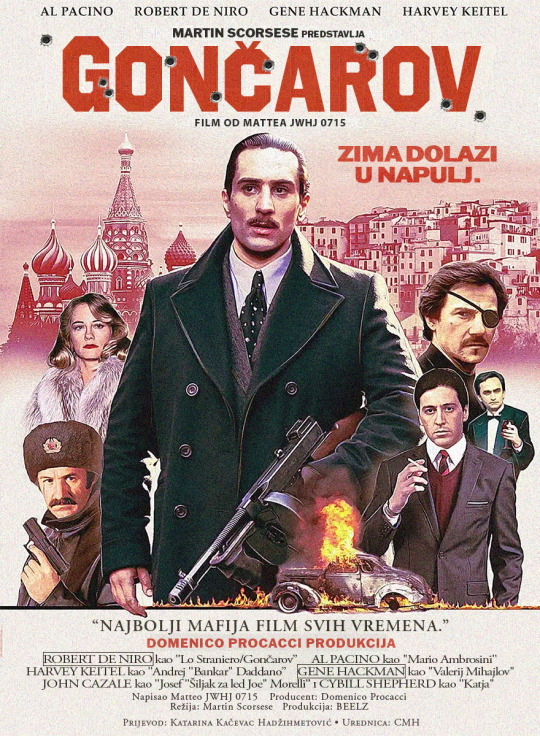


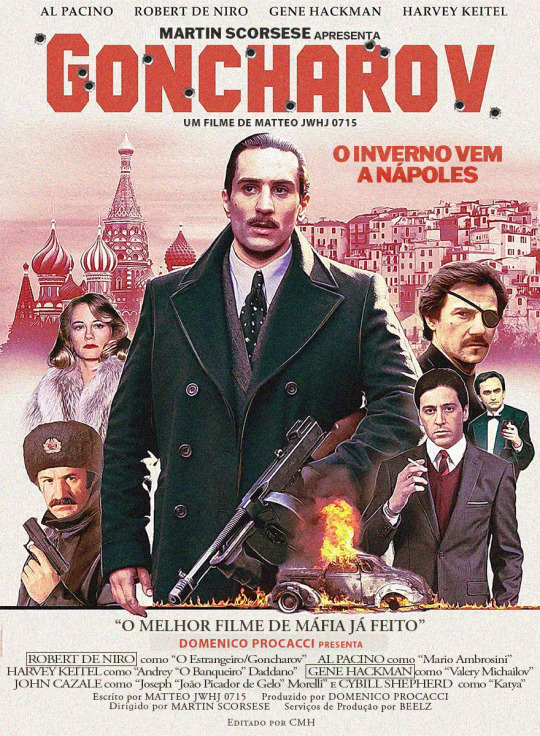

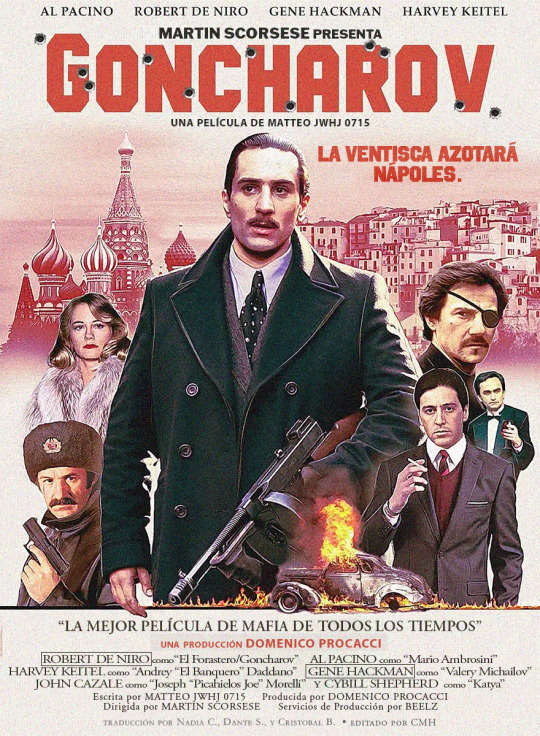
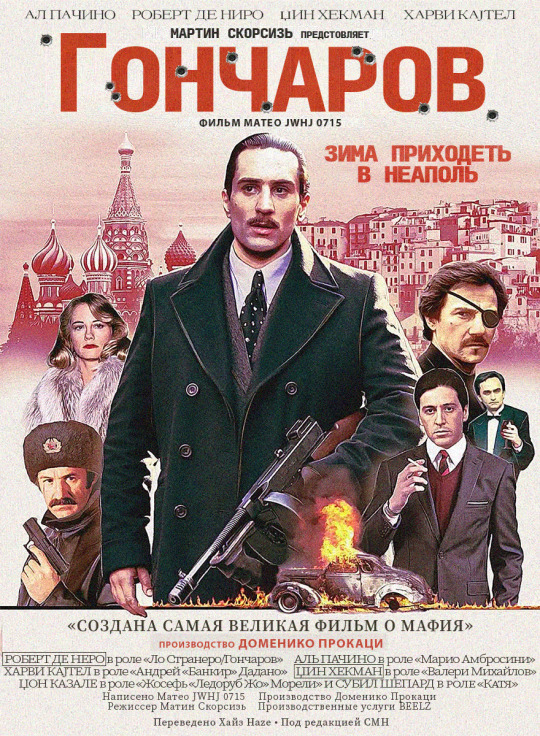

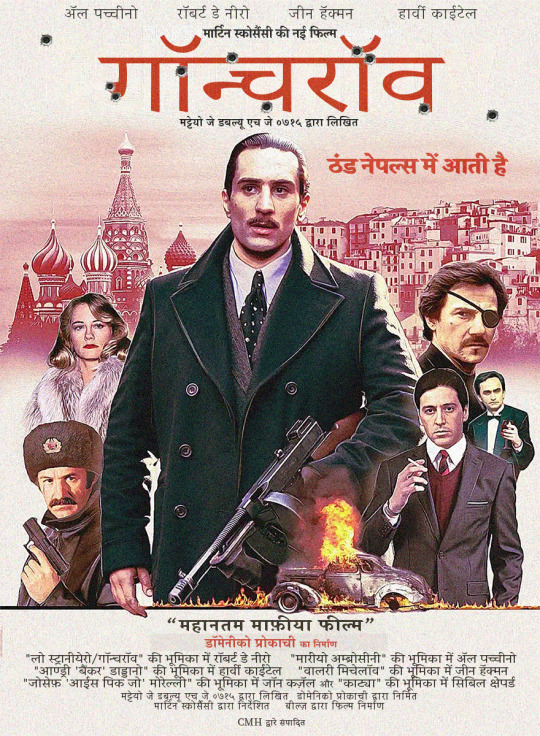
Goncharov (1973) International Posters
Translation Credits
Serbo-Croatian (Croatian/Bosnian) - Katarina Kačevac Hadžihmetović
Serbo-Croatian (Serbian/Montenegrin) - Katarina Kačevac Hadžihmetović
Chinese (Traditional) - CMH (@honest-studies)
Spanish - Nadia C., Dante S., Cristobal B.
French - Anonymous
Hindi - Anonymous
Russian - Haze
German - Prinzessin der Spinnen
Portuguese (Brazilian) - Anonymous
Original poster design credits to @beelzeebub, Photoshop editing work by me.
#unreality#translation#goncharov#gonchposting#langblr#foreign language#poster#international#goncharov 1973#katya#shoutout to the goncharov 1973 lore discord server#beelzeebub#mafia#cult classic#serbo-croatian#chinese#spanish#french#hindi#russian#german#edit: currently working w translators to fix russian translation :)
662 notes
·
View notes
Text
Discovered 2 new Hindi resources:
A Door Into Hindi, free online programme created by American universities. It tackles Hindi for beginners, explaining grammar stuff
Shikshaa Deekshaa, a YouTube channel about grammar, vocabulary, etc. It hasn't been updated in 3 years but the videos look useful anyway.
121 notes
·
View notes
Text

So who was going to tell me about this Hindi memory hack that is apparently taught to children to help them remember which hand is left and which is right: form circles with your thumb and forefinger. The hand that looks like the letter b for बायाँ is left, and the one that looks like the letter d for दायाँ is right. Brilliant!
118 notes
·
View notes
Text
Presenting, an apple.
Some Indian languages: What do the Persians call it? Yeah, I'm gonna go with that.
Other Indian languages: What do the English call it? Yeah, I'm gonna go with that.
Marathi: :)
All other Indian languages: 👀
Marathi: It's clearly a 'travelmoon'. :) It's like a little moon I can carry when I travel.
Gujarati: *furiously takes notes*
#marathi#hindi#india#indian languages#langblr#probably not accurate but look this was really funny in my head#gujarati#weird that neither kulkarni nor wiktionary record an etymology for सफरचंद
234 notes
·
View notes
Text
Additional letters
This is a compilation of additional letters in the main scripts of the world.
Arabic script
The basic Arabic abjad has 28 letters: ح ج ث ت ب ا ص ش س ز ر ذ د ق ف غ ع ظ ط ض ي و ه ن م ل ك. Some languages have adapted it by including additional letters:
پ: Arabic, Balochi, Kashmiri, Khowar, Kurdish, Pashto, Persian, Punjabi, Sindhi, Urdu, Uyghur
ٻ: Saraiki, Sindhi
ڀ: Sindhi
ٺ: Sindhi
ٽ: Sindhi
ٿ: Rajasthani, Sindhi
ﭦ: Kashmiri, Punjabi, Urdu
ټ: Pashto
چ: Kashmiri, Kurdish, Pashto, Persian, Punjabi, Urdu
څ: Pashto
ځ: Pashto
ڊ: Saraiki
ډ: Pashto
ڌ: Sindhi
ڈ: Kashmiri, Punjabi, Urdu
ݙ: Saraiki
ڕ: Kurdish
ړ: Ormuri, Torwali
ژ: Kurdish, Pashto, Persian, Punjabi, Urdu, Uyghur
ڑ: Punjabi, Urdu
ږ: Pashto
ݭ: Gawri, Ormuri
ݜ: Shina
ښ: Pashto
ڜ: Moroccan Arabic
ڠ: Malay
ڥ : Algerian Arabic, Tunisian Arabic
ڤ: Kurdish, Malay
ڨ: Algerian Arabic, Tunisian Arabic
ک: Sindhi
ݢ: Malay
گ: Pashto, Kurdish, Kyrgyz, Mesopotamian Arabic, Persian, Punjabi, Urdu, Uyghur
ګ: Pashto
ڱ: Sindhi
ڳ: Saraiki, Sindhi
ڪ: Sindhi
ڬ: Malay
ڭ: Algerian Arabic, Kyrgyz, Moroccan Arabic, Uyghur
ڵ: Kurdish
لؕ : Punjabi
ݪ: Gawri, Marwari
ڽ: Malay
ڻ: Sindhi
ݨ: Punjabi, Saraiki
ڼ: Pashto
ۏ: Malay
ۋ: Kyrgyz, Uyghur
ۆ: Kurdish, Uyghur
ۇ: Kyrgyz, Uyghur
ۅ: Kyrgyz
ی: Pashto
ې: Pashto, Uyghur
ىٓ: Saraiki
ێ: Kurdish
ۍ: Pashto
ئ: Pashto, Punjabi, Saraiki, Urdu
ھ: Kurdish, Punjabi, Urdu, Uyghur
ے: Punjabi, Urdu
Cyrillic script
The basic Cyrillic alphabet includes 29 letters: А а Б б В в Г г Д д Е е Ж ж З з И и Й й К к Л л М м Н н О о П п Р р С с Т т У у Ф ф Х х Ц ц Ч ч Ш ш Щ щ Ь ь Ю ю Я я. Most languages use additional letters:
Ӕ ӕ: Ossetian
Ä ӓ: Hill Mari, Kildin Sámi
Ӑ ӑ: Chuvash
Ґ ґ: Belarusian, Rusyn, Ukrainian
Ӷ ӷ: Abkhaz
Ѓ ѓ: Macedonian
Г' г': Kurdish
Гъ гъ: Avar, Ossetian
Гь гь: Avar
Гӏ гӏ: Avar
Ғ ғ: Azerbaijani, Bashkir, Tajik, Uzbek
Дә дә: Abkhaz
Дж дж: Bulgarian, Ossetian
Дз дз: Bulgarian, Ossetian
Ђ ђ: Montenegrin, Serbian
Ѕ ѕ: Macedonian
Ҙ ҙ: Bashkir
Є є: Rusyn, Ukrainian
Ә ә: Abkhaz, Azerbaijani, Bashkir, Dungan, Kalmyk, Kurdish, Tatar
Ә' ә': Kurdish
Ё ё: Azerbaijani, Bashkir, Buryat, Chuvash, Dungan, Hill Mari, Khalkha, Kildin Sámi, Komi-Permyak, Kyrgyz, Meadow Mari, Ossetian, Russian, Rusyn, Tajik, Tatar, Ukrainian, Uzbek
Ӗ ӗ: Chuvash
Ӂ ӂ: Moldovan
Җ җ: Dungan, Kalmyk
Жә жә: Abkhaz
З́ з́: Montenegrin
Ӡ ӡ: Abkhaz
Ӡә ӡә: Abkhaz
І і: Avar, Belarusian, Rusyn, Ukrainian
Ї ї: Rusyn, Ukrainian
Ӣ ӣ: Tajik
Ҋ ҋ: Kildin Sámi
Ј ј: Azerbaijani, Kildin Sámi, Macedonian, Montenegrin, Serbian
Ҝ ҝ: Azerbaijani
Қ қ: Abkhaz, Tajik, Uzbek
Қь қь: Abkhaz
Ҡ ҡ: Bashkir
Ҟ ҟ: Abkhaz
Ҟь ҟь: Abkhaz
Ќ ќ: Macedonian
К' к': Kurdish
Къ къ: Avar, Ossetian
Кь кь: Abkhaz, Avar
Кӏ кӏ: Avar
Кӏкӏ кӏкӏ: Avar
Кк кк: Avar
Ӆ ӆ: Kildin Sámi
Љ љ: Macedonian, Montenegrin, Serbian
Ӎ ӎ: Kildin Sámi
Ӊ ң: Bashkir, Dungan, Kalmyk, Kildin Sámi, Kyrgyz, Tatar
Ҥ ҥ: Meadow Mari
Ӈ ӈ: Kildin Sámi
Њ њ: Macedonian, Montenegrin, Serbian
Ө ө: Azerbaijani, Bashkir, Buryat, Kalmyk, Khalkha, Kyrgyz, Tatar
Ö ӧ: Hill Mari, Komi-Permyak, Kurdish, Meadow Mari
Ԥ ԥ: Abkhaz
П' п': Kurdish
Ҧ ҧ: Abkhaz
Пъ пъ: Ossetian
Ҏ ҏ: Kildin Sámi
Р' р': Kurdish
Ҫ ҫ: Bashkir, Chuvash
С́ с́: Montenegrin
Ҭ ҭ: Abkhaz
Ҭә ҭә: Abkhaz
Т' т': Kurdish
Тә тә: Abkhaz
Тъ тъ: Ossetian
Тӏ тӏ: Avar
Ћ ћ: Montenegrin, Serbian
Ӱ ӱ: Hill Mari, Meadow Mari
Ӳ ӳ: Chuvash
Ў ў: Belarusian, Dungan, Uzbek
Ӯ ӯ: Tajik
Ү ү: Azerbaijani, Bashkir, Buryat, Dungan, Kalmyk, Khalkha, Kyrgyz, Tatar
Ҳ ҳ: Abkhaz, Tajik, Uzbek
Хъ хъ: Ossetian
Хь хь: Abkhaz
Хӏ хӏ: Avar
Ҳ ҳ: Abkhaz
Ҳә ҳә: Abkhaz
Һ һ: Azerbaijani, Bashkir, Buryat, Kalmyk, Kildin Sámi, Kurdish, Tatar
Һ' һ': Kurdish
Ҵ ҵ: Abkhaz
Ҵә ҵә: Abkhaz
Цә цә: Abkhaz
Цъ цъ: Ossetian
Цц цц: Avar
Цӏ цӏ: Avar
Цӏцӏ цӏц: Avar
Џ џ: Abkhaz, Macedonian, Montenegrin, Serbian
Џь џь: Abkhaz
Ҹ ҹ: Azerbaijani
Ҷ ҷ: Azerbaijani, Tajik
Ч' ч': Kurdish
Чъ чъ: Ossetian
Чӏ чӏ: Avar
Чӏчӏ чӏчӏ: Avar
Ҽ ҽ: Abkhaz
Ҿ ҿ: Abkhaz
Шь шь: Abkhaz
Шә шә: Abkhaz
’: Belarusian, Ukrainian
Ъ ъ: Azerbaijani, Bashkir, Chuvash, Dungan, Hill Mari, Khalkha, Komi-Permyak, Meadow Mari, Ossetian, Russian, Rusyn, Tajik, Tatar, Uzbek
Ҍ ҍ: Kildin Sámi
Ы ы: Abkhaz, Azerbaijani, Bashkir, Belarusian, Buryat, Chuvash, Dungan, Hill Mari, Khalkha, Kildin Sámi, Komi-Permyak, Kyrgyz, Meadow Mari, Moldovan, Ossetian, Russian, Tatar
Ӹ ӹ: Hill Mari
Ҩ ҩ: Abkhaz
Э э: Azerbaijani, Bashkir, Belarusian, Buryat, Chuvash, Dungan, Hill Mari, Kalmyk, Khalkha, Kildin Sámi, Komi-Permyak, Kyrgyz, Kurdish, Meadow Mari, Moldovan, Ossetian, Russian, Tajik, Tatar, Uzbek
Ӭ ӭ: Kildin Sámi
Ԛ ԛ: Kurdish
Ԝ ԝ: Kurdish
Devanagari script
The basic Devanagari abugida includes 48 letters: अ आ इ ई उ ऊ ऋ ए पॅ ऐ ओ औ अं अः ॲं क ख ग घ ङ ह च छ ज झ ञ य श ट ठ ड ढ ण र ष त थ द ध न ल स प फ ब भ म व. But some languages add additional ones:
ॠ: Sanskrit
ऌ: Sanskrit
ॡ: Sanskrit
ॲ: Marathi
ऑ: Marathi
क़: Hindi
ख़: Hindi
ग़: Hindi
ॻ: Saraiki, Sindhi
ज़: Hindi
ॼ: Saraiki, Sindhi
झ़: Hindi
ॾ: Saraiki, Sindhi
फ़: Hindi
ड़: Hindi
ढ़: Hindi
ॿ: Saraiki, Sindhi
ळ: Gharwali, Konkani, Marathi, Rajasthani, Sanskrit
ॸ: Marwari
Geʽez script
The basic Geʽez abugida consists of 217 letters: ሀ ሁ ሂ ሃ ሄ ህ ሆ ለ ሉ ሊ ላ ሌ ል ሎ ሏ ሐ ሑ ሒ ሓ ሔ ሕ ሖ ሗ መ ሙ ሚ ማ ሜ ም ሞ ሟ ፙ ሠ ሡ ሢ ሣ ሤ ሥ ሦ ሧ ረ ሩ ሪ ራ ሬ ር ሮ ሯ ፘ ሰ ሱ ሲ ሳ ሴ ስ ሶ ሸ ሹ ሺ ሻ ሼ ሽ ሾ ሷ ቀ ቁ ቂ ቃ ቄ ቅ ቆ ቋ በ ቡ ቢ ባ ቤ ብ ቦ ቧ ተ ቱ ቲ ታ ቴ ት ቶ ቷ ቸ ቹ ቺ ቻ ቼ ች ቾ ኀ ኁ ኂ ኃ ኄ ኅ ኆ ኋ ነ ኑ ኒ ና ኔ ን ኖ ኗ አ ኡ ኢ ኣ ኤ እ ኦ ኧ ከ ኩ ኪ ካ ኬ ክ ኮ ኳ ወ ዉ ዊ ዋ ዌ ው ዎ ዐ ዑ ዒ ዓ ዔ ዕ ዖ ዘ ዙ ዚ ዛ ዜ ዝ ዞ ዟ የ ዩ ዪ ያ ዬ ይ ዮ ደ ዱ ዲ ዳ ዴ ድ ዶ ዷ ገ ጉ ጊ ጋ ጌ ግ ጎ ጓ ጠ ጡ ጢ ጣ ጤ ጥ ጦ ጧ ጰ ጱ ጲ ጳ ጴ ጵ ጶ ጷ ጸ ጹ ጺ ጻ ጼ ጽ ጾ ጿ ፀ ፁ ፂ ፃ ፄ ፅ ፆ ፈ ፉ ፊ ፋ ፌ ፍ ፎ ፏ ፚ ፐ ፑ ፒ ፓ ፔ ፕ ፖ ፗ. Certain languages use additional letters:
ቈ ቊ ቋ ቌ ቍ: Amharic, Bilen, Tigrinya
ኈ ኊ ኋ ኌ ኍ: Amharic, Bilen
ኰ ኲ ኳ ኴ ኵ: Amharic, Bilen, Tigrinya
ጐ ጒ ጓ ጔ ጕ: Amharic, Bilen, Tigrinya
ቐ ቑ ቒ ቓ ቔ ቕ ቖ: Amharic, Bilen, Harari, Tigre, Tigrinya
ቘ ቚ ቛ ቜ ቝ: Tigrinya
ቨ ቩ ቪ ቫ ቬ ቭ ቮ: Amharic, Bilen, Harari, Tigrinya
ⶓ ⶔ ጟ ⶕ ⶖ: Bilen
ኘ ኙ ኚ ኛ ኜ ኝ ኞ: Amharic, Bilen, Harari, Tigrinya
ኸ ኹ ኺ ኻ ኼ ኽ ኾ: Amharic, Harari, Tigrinya
ዀ ዂ ዃ ዄ ዅ: Amharic, Bilen, Tigrinya
ዠ ዡ ዢ ዣ ዤ ዥ ዦ: Amharic, Bilen, Tigre, Tigrinya
ጀ ጁ ጂ ጃ ጄ ጅ ጆ: Amharic, Bilen, Harari, Tigrinya
ጘ ጙ ጚ ጛ ጜ ጝ ጞ: Bilen, Tigre
ጨ ጩ ጪ ጫ ጬ ጭ ጮ: Amharic, Bilen, Harari, Tigrinya
Hebrew script
The basic Hebrew abjad has 22 letters: א ב ג ד ה ו ז ח ט י ך/כ ל ם/מ ן/נ ס ע ף/פ ץ/צ ק ר ש ת. Yiddish adds two more:
וו וי יי: Yiddish
בֿ: Yiddish
Latin script
The basic Latin alphabet consists of 26 letters: A a B b C c D d E e F f G g H h I i J j K k L l M m N n O o P p Q q R r S s T t U u V v W w X x Y y Z z. Many languages add special characters:
Countries between parentheses are added to distinguish between different languages that have the same name.
Æ æ: Danish, English, Faroese, Icelandic, Kawésqar, Lule Sámi, Norwegian, Southern Sámi, Yaghan
Ɑ ɑ (Latin alpha): Duka, Fe’fe’, Mbembe, Mbo, Tigon
Ð ð (eth): Anii, Elfdalian, Faroese, Icelandic
Ǝ ǝ (turned E): Anii, Bangolan, Bissa, Bura, Kanuri, Kposo, Lama, Lukpa, Ngizim, Tamahaq, Tamasheq, Turka, Yom
Ə ə (schwa): Awing, Bafut, Bulu, Daba, Dazaga, Dii, Ewondo, Fe’fe’, Gude, Kamwe, Kasena, Kemezung, Kpelle, Lyélé, Mada, Makaa, Manengumba, Mfumte, Mofu-Gudur, Mundang, Mundani, Ngas, Nso, Nuni, Parkwa, Tarok, Teda, Temne, Vengo, Vute, Yom, Zulgo-Gemzek
Ɛ ɛ (Latin epsilon): Abidji, Adele, Adjukru, Aghem, Ahanta, Ait Seghrouchen, Ait Warain, Aja (Benin), Akan, Anii, Anyin, Ayizo, Bafia, Bafut, Baka (Cameroon), Bambara, Baoulé, Bariba, Basa (Cameroon), Beni Snous, Bhele, Bissa, Boko, Busa (Nigeria), Central Atlas Tamazight, Cerma, Chakosi, Dagaare, Dan, Dangme, Dendi, Dii, Dinka, Djerbi, Duala, Dyula, Ewe, Ewondo, Ghomara, Iznasen, Kabyle, Kako, Kemezung, Kenyang, Kposo, Kyode, Lika, Lingala, Lupka, Maasai, Mandi (Cameroon), Manenguba, Mangbetu, Matmata, Mbelime, Medumba, Mzab-Wargla, Nawdm, Ngiemboon, Ngomba, Noni, Nuer, Sanhaja de Srair, Shawiya, Shenwa, Shilha, Tarifit, Tem, Tigon, Turka, Yoruba, Zuwara
Ɣ ɣ (Latin gamma): Air Tamajaq, Dagbani, Dinka, Ewe, Kabiye, Kabyle, Kpelle, Kposo, Lukpa, Tamahaq, Tamasheq, Tawellemet, Wakhi
ɤ (ram’s horn/baby gamma): Dan, Goo
I ı (Dotless): Crimean Tatar, Gagauz, Kazakh, Turkish
Ɪ ɪ (small capital): Kulango, Lomakka
Ɩ ɩ (iota): Bissa, Kabiye
Kʼ ĸ (kra): Inuttitut
Ł ł (L with stroke): Gwich’in, Iñupiaq, Kashubian, Navajo, Polish, Silesian, Sorbian, Venetian
Ŋ ŋ (eng): Aghem, Iñupiaq, Kemezung, Lukpa, Mandi (Cameroon), Medumba, Mundani, Nawdm, Ngiemboon, Ngomba, Noni, Northern Sámi, Nuer, Skolt Sámi, Tem, Tigon, Wuzlam
Ɔ ɔ (open O): Aghem, Akan, Bafia, Baka, Bambara, Baoulé, Bariba, Bassa, Boko, Dii, Dinka, Duala, Dyula, Ewe, Ewondo, Kako, Kemezung, Kposo, Lika, Lingala, Maasai, Mandi (Cameroon), Manenguba, Mangbetu, Mbelime, Medumba, Mundani, Nawdm, Ngiemboon, Ngomba, Nuer, Tem, Tigon, Turka, Yoruba
Œ œ: French, Lombard
Ʀ ʀ (small capital R): Alutiiq
ẞ ß (Eszett): German
Þ þ (thorn): Icelandic
Ɥ ɥ (turned H): Dan
Ʊ ʊ (upsilon): Anii, Anyin, Foodo, Lukpa, Tem, Yom
Ʌ ʌ (turned V): Dan, Ch’ol, Oneida, Temne, Tepehuán, Wounaan
Ʒ ʒ (ezh): Aja, Dagbani, Laz, Skolt Sámi
Ɂ ɂ (glottal stop): Chipewyan, Ditidaht, Dogrib, Halkomelem, Kutenai, Lushootseed, Nuu-chah-nulth, Slavey, Thompson
Ꞌ ꞌ (saltillo): Central Sama, Mexicanero, Mi'kmaq, Nahuatl, Nawat, Rapa Nui, Tlapane
Tibetan script
The basic Tibetan abugida is formed by 34 letters: ཀ ཁ ག ང ཅ ཆ ཇ ཉ ཏ ཐ ད ན པ ཕ བ མ ཙ ཚ ཛ ཝ ཞ ཟ འ ཡ ར ལ ཤ ས ཧ ཨ ཨི ཨུ ཨེ ཨོ. Balti uses four additional characters:
ཫ: Balti
ཬ: Balti
ཁ༹: Balti
ག༹: Balti
#langblr#lingblr#english#hindi#arabic#french#russian#urdu#german#punjabi#marathi#turkish#persian#yoruba#polish#ukrainian#uzbek#sindhi#pashto#saraiki#malay#kurdish#bambara#dyula#azerbaijani#kazakh#hungarian#hebrew#tibetan
64 notes
·
View notes
Text
I will continue prioritising Yiddish, Spanish, Romanian and Croatian next year but I'll make exceptions for travel or if I get that beca santander to learn French. I'm still going 👀 at Korean but I really don't think I should focus on too many new languages but perhaps I will be able to squeeze in a little Korean challenge or something.
I'll renegotiate once I know where I'm moving next autumn because if I return to Ireland I'll want to learn some Irish, if I move to the UK or US I'd want to pick up at least a little bit BSL or ASL respectively.
#langblr#I'm so sorry @ Portuguese Hindi and many other languages I had to put on pause for now#If I meet my goals next year perhaps I'll allow some Greek and Turkish studying 👀
21 notes
·
View notes
Text
One — affirmation. Hindi is a gendered language, and that it does present complications for non-binary and gender-fluid individuals. But languages are products of human culture. Any language can describe any situation, and Hindi is capable of describing any identity.
Two — flexibility and process. As students learn how to be themselves in a new language, what fits one day might not fit a semester later.
Three — allowing new forms. When no standard grammatical forms fit a student’s circumstances, teachers should be ready to suggest alternatives, drawing from India’s diverse linguistic landscape where possible.
Four— code-switching. Just as students are taught when to use formal and informal language, non-binary students should be encouraged to think about what language choices feel right in varied circumstances.
Five — acknowledge the haters. This should not prevent a non-binary student from developing a system that works for them, and should not prevent language teachers from teaching a diversity of gender expressions in Hindi.
#hindi#hindi langblr#nonbinary#gender#queerness#language learning#langblr#lgbt#gender fluid#language#article
13 notes
·
View notes
Text
// langblr(ish) intro
my heritage languages are hindi & punjabi, i understand both but if i try to speak hindi i will stammer and if i try to speak punjabi i will speak hindi
i'm a first year cogsci & linguistics major
studied mandarin chinese for nearly 3 years, might minor in it
studied spanish for 4 years in high school
i’ve dabbled in a handful of other languages (thai, japanese, french, russian)
other hobbies include writing, crochet/knitting, reading, and whatever else i decide to hyperfixate on any given day
60 notes
·
View notes
Text
‘Ardhangini’ (अर्धांगिनी) is such a cute way to refer to your wife like yes that woman is half my body
482 notes
·
View notes
Text

both are foreign to the average non-hindustani speaker. why suffer twice? or is the colonial hangover not gone yet? won't that make GoI just another suppressive regime minus the delusion that minority has a say in the workings of this country (which very clearly they don't) :)
Bharat or India, the name doesn't matter. our nation's 'democratic' constitution has always hid pro-colonial agendas in it. I ask, are we really independent? are we really naïve enough enough to believe a common language or culture based on the majority ethnic composition will bring unity in this nation?? (hello? Sri Lankan civil war, Bangladesh liberation war, political instability in Myanmar...) you guys really think it works? is our shared South Asian history not a proof enough to satisfy the Indians' dogmatic mindsets?
also, how does it make us any different from China or Pakistan? we just put a gold cover over an ethnolinguistic genocide and tell the world how proud we are.
over 700 languages (minus the dialects) and we chose a newly created bastard of a tongue, with negligible prior literature, devised and popularised by a British gentleman in Calcutta 'cause they couldn't bother to respect our diversity. And they talk of history lol
20 notes
·
View notes
Text




Live reaction of me when I understand how something works in the Hindi language
#giggling and kicking my legs#every time#cutest language fr#it's beautifully simple and incredibly difficult AT THE SAME TIME#i love it so much#hindi language#indian languages#language learning#language practice#langblr#desiblr
13 notes
·
View notes